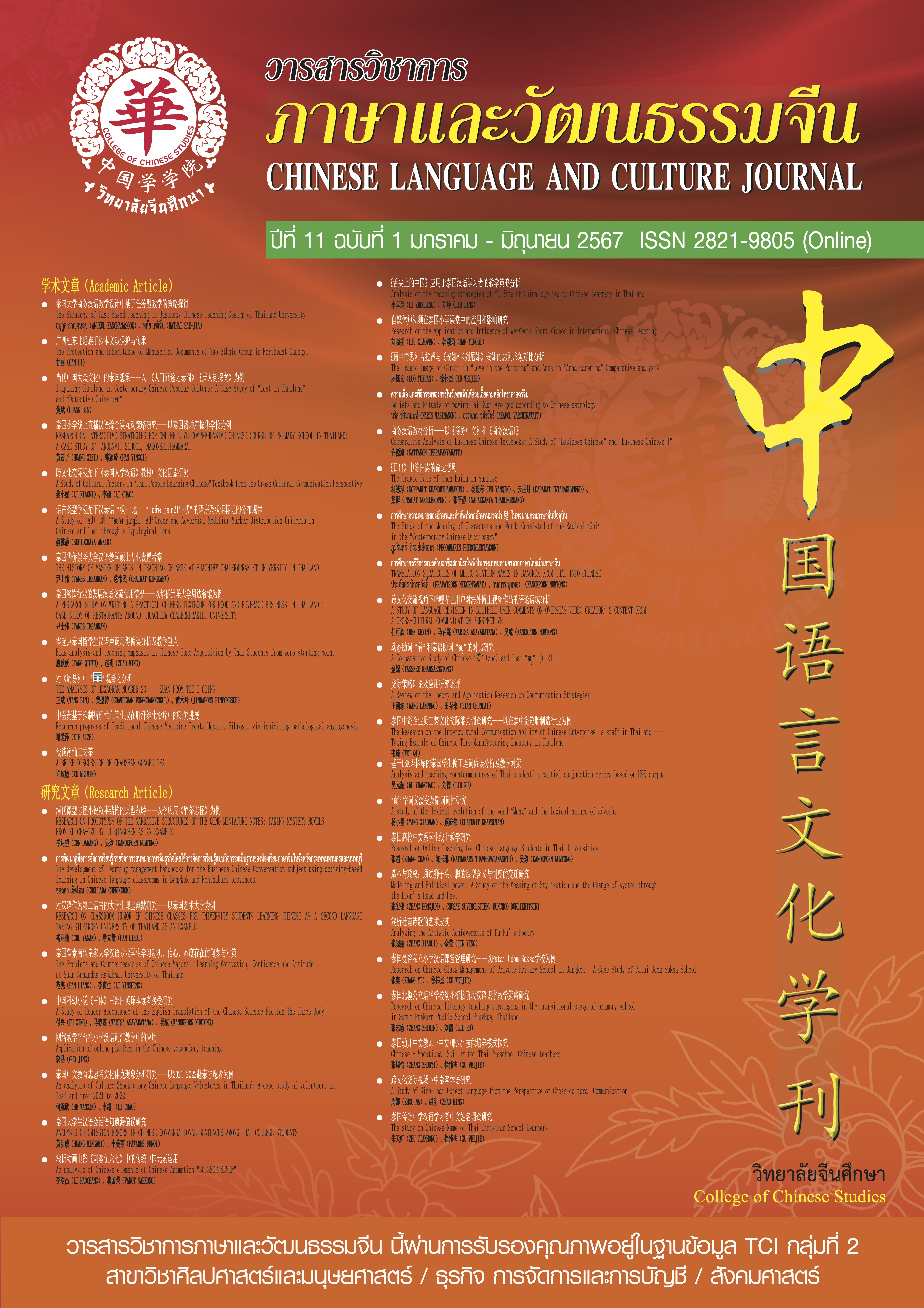Research on the Application and Influence of We-Media Short Videos in International Chinese Teaching
Keywords:
Self-media short video, Chinese class, cross-cultural, influenceAbstract
Today is an era when everyone can use self-media, and self-media permeates every aspect of life.The term "We Media" is transformed from the English "we media". It is a way for the general public to understand and share their own facts and their own news after they are strengthened by digital technology and connected to the world, the US "Wired" magazine, simplified its concept "We media is the communication of everyone". Short video, also known as "short video", is a way of disseminating Internet video content. It generally refers to the dissemination on the Internet new media platform and is suitable for viewing in a mobile state. The duration ranges from a few seconds to a few minutes, but is generally controlled within three minutes, high-frequency video transmission content. With the continuous development of the Internet information age, self-media is also exerting more and more influence, and its influence in teaching Chinese as a foreign language is also growing. There are also more and more short videos related to Chinese as a foreign language. From the perspective of nationality ,It can be divided into two categories, one is short videos about Chinese language and Chinese culture created by Chinese whose mother tongue is Chinese, and the other is some short videos about Chinese and foreign cultural differences and how to learn Chinese created by non-Chinese native speakers. and other types of short videos. The first one is mainly to teach foreigners to learn Chinese and spread Chinese culture from the perspective of Chinese people. The second one is to look at the cultural differences between China and foreign countries from the perspective of a foreigner who has learned Chinese, and to tell about China in the eyes of foreigners, Chinese and Chinese culture. These two types of short videos have positive effects and influences on teaching Chinese as a foreign language. It also plays a role that cannot be ignored in online classrooms under the epidemic。Therefore, this study takes public primary school teachers under the Phuket government in Thailand as the research object, based on constructivist learning theory, social cognitive theory and emotional cognitive theory, and explores the short video content by using literature research, questionnaire survey and interview methods. The role of teaching Chinese as a foreign language in primary schools in Thailand.
References
著作:
戴晓东.跨文化交际理论[M],上海:上海外语教育出版社,2011年
李晓琪.对外汉语口语教学研究[M],北京:商务印书馆,2006年
刘徇.对外汉语教学引论[M],北京:北京大学出版社,2000年
赵金铭.汉语作为第二语言技能教学[M],北京:北京大学出版社,2010年
期刊:
毕继万.跨文化交际研究与第二语言教学[J],《语言教学与研究》,1998年
崔帅乾.试论新媒体视阈下自媒体创作的现状与趋势[D]青岛科技大学,2018.
戴炜栋.我国外语专业教育的定位,布局与发展[J],《当代外语研究》,2013年
李修斌,Matthew JOHNSON.对外汉语文化教学内容划分研究评述[J],《海外华文教育》,2013年
罗新星.跨文化传播视野下的文化软实力[J],湖南社会科学,2011年
学位论文:
鲍方.自媒体短视频的影视审美特性研究[D]华中师范大学,2017.
付佳.短视频在中级对外汉语课堂教学中的运用研究[D].导师:陈玉蓉.江西科技师范大学, 2022.
桂小婷.文化内容短视频在对外汉语教学的应用研究[D].导师:朱敏霞.信阳师范学院, 2022.
李南羲.视频类素材在对外汉语课堂教学中的应用研究[D].陕西师范大学,2019.
李姗姗.电视综艺节目对语文教学的启示[D]湖南师范大学,2014.
刘宇.影视片段在对外汉语口语教学中的应用[D].山东师范大学,2014.
任思雨.社交网络美食类短视频研究[D]山东大学,2018.
任怡斐.基于无缝学习理论的汉语教学视频研究——以YouTube汉语教学视频为例[D]福建师范大学,
孙明明.汉语教学软件在对外汉语初级口语教学中的应用研究[D]辽宁示范大学,2015.
田青.视频素材在对外汉语中级口语课中的教学应用研究[D]西北示范大学,2020.
万久雨.基于“汉语桥”古诗词试题的跨文化交际现象研究[D]兰州大学,2021.
王晓波.综艺节目在汉语国际教育中的应用探析[D]天津师范大学,2017.
魏怡孜.李子柒短视频的国际传播效果研究[D]北京外国语大学,2021.
武超.口语习用语在中级汉语教学中的有效教学策略——以《发展汉语》中级系列教材为例[D]河南
师范大学,2019.
徐帅.影视资源在对外汉语教学中的应用[D]青岛大学,2017.
许威.外国人在华自媒体短视频及其对于对外汉语教学的启示[D]西北大学,2020.
张艺馨.对外汉语视频教学及其走势[D].华中师范大学,2017.
赵秀敏.李子柒短视频的文化内容探究及在国际中文教育中的运用[D].导师:李正升.云南师范大学,
郑迟.互联网背景下中国文化国际传播策略研究——以“央视春晚”在海外视频网站上的传播为例[D]
上海交通大学,2017.
郑惠.基于在华外国人自媒体短视频的中国文化传播研究[D]渤海大学,2021.
张青云.自媒体与对外汉语教学中跨文化交际能力培养研究[D]浙江科技学院,2017.
张雨晨.自媒体汉语教学短视频素材在韩国汉语课堂中的应用研究[D]西北大学,2021.
周增妹.中外自媒体视频关于中国形象的跨文化传播研究--以李子柒和“歪研会”为例[D]西北大学,
周仲谋.由《非正式会谈》看跨文化交际中的文化差异和文化融合[D]兰州大学,2021.
Downloads
Published
How to Cite
Issue
Section
License
Copyright (c) 2024 Chinese Language and Culture Journal

This work is licensed under a Creative Commons Attribution-NonCommercial-NoDerivatives 4.0 International License.
บทความที่ได้รับการตีพิมพ์เป็นลิขสิทธิ์ของวารสารภาษาและวัฒนธรรมจีน มหาวิทยาลัยหัวเฉียวเฉลิมพระเกียรติ
บทความใน “วารสารวิชาการภาษาและวัฒนธรรมจีน” เป็นทรรศนะของผู้เขียนโดยเฉพาะ กองบรรณาธิการไม่มีส่วนในความคิดเห็นในข้อเขียนเหล่านั้น




